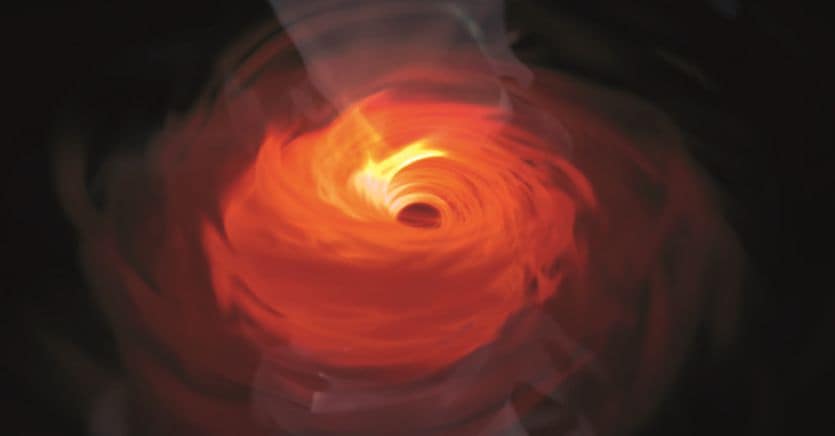It is Tuesday 10 April 2019. Another 40 seconds and then world public opinion will be able to admire for the first time the photograph of a gigantic black hole. 55 million light years away from Earth, it is located at the center of the galaxy Messier 87, called M87 for short. For a long time it was thought that the deep darkness of black holes would never reveal itself to our eyes, and instead today, for the first time, it will rise to the fore. The press conference has begun, but we still do not even remotely imagine what effects it will unleash. A millennial adventure of humanity to discover the boundaries of their knowledge, revolutionary theories on space and time, ultra-modern technologies, the work of a new generation of radio astronomers and my entire life as a researcher will converge today in the image of this black hole . Suddenly the scoreboard lights up: it is 3:07 pm.
A fiery red ring
In the infinite darkness of space, from the center of the galaxy Messier 87, a fiery red ring appears. The outlines that persist, slightly blurred, on the screen are vaguely drawn; the ring sparkles, enchants the spectators and suggests that the photo, once considered impossible to take, has finally found its way through radio waves to reach us, on Earth, from a distance of 500 trillion kilometers. Supermassive black holes are the cemeteries of space.
Loading…
Collapse of the stars
They originate from the collapse of stars that wear out and die out. The universe, however, feeds them with stars, planets and gigantic nebulae. Thanks to their enormous mass, they curve the empty space in an extreme way and seem to be able to stop the passage of time. If something gets too close, black holes grab it and never let go anymore: not even rays of light can escape it.
But how to see black holes if no ray of light can reach us from there? How do we know that this black hole compresses 6.5 billion solar masses into itself, making it supermassive? After all, the incandescent ring envelops the deep black of its interior that does not let out not a ray of light, not a word. “This is the first image of a black hole,” I say when, finally, it appears on the screen in all its grandeur.
Black holes, one of the greatest secrets of physics
If we were able to show this image and why for years, overcoming difficulties and differences, men and women have pursued a common goal all over the world. Together they aimed to find black holes, one of the greatest secrets of physics. This image has accompanied us to the borders of our knowledge. Crazy as it may sound, the edge of black holes marks the limit of our ability to measure and investigate, and the big question we ask ourselves today is whether one day we will ever be able to overcome it. This new chapter in physics and astronomy was inaugurated by generations of scientists before us. Twenty years ago, the desire to capture an image of a black hole was still considered a bizarre dream. It was at that time that I, a young researcher on the hunt for black holes, stumbled upon this adventure that has not yet ceased to fascinate me. I didn’t have the faintest idea of how exciting it was going to make my life, how it would affect and change it. It has become an expedition at the end of time and space, a journey into the hearts of millions of people, even though I was the last to understand it. It is with the help of the world that we have managed to achieve this image, now and with the world that we share it, and the world has embraced it: the strongest embrace I have ever thought possible.
